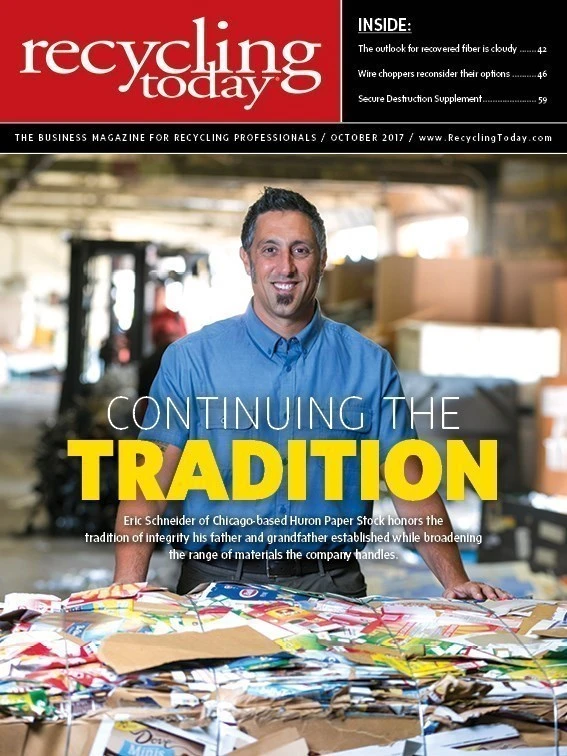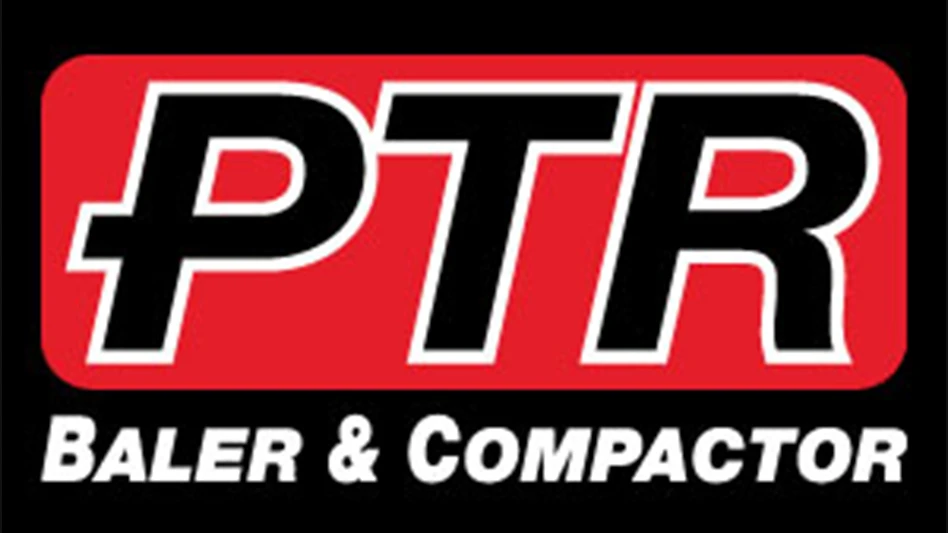
Buying trucks for a recycling operation
With a car, one can go glitzy and trade it in after a year or two. But trucks are investments that need to help the bottom line.
New or used, buy or lease?
“When we started in the roll-off box business in 1996, all of the boxes were brand new,” says Randy Castriota, president of Castriota Metals, Pittsburgh.
Twenty years into the business, some of the boxes have been repaired, and some have been cut up for scrap. At one point, Castriota Metals had 500 boxes. Now, the company has 470 open-top containers in sizes ranging from 5 to 55 yards.
Not everyone can buy new containers or trucks, however. Some companies are always on the lookout for good preowned trucks.
“Historically, we tended to buy used,” says the director of transportation at a Midwestern scrap processor that has 34 private trucks at multiple locations throughout its region. In addition, the company supplements its operations using its strategic relationships with dozens of third-party truckers. That group ranges from single-unit owner/operators through midsize and large fleet operators for its ferrous operations. The company also uses third-party logistics companies to move nonferrous material.
In a planned move, the company has started to move away from the buy-versus-lease or new-versus-used questions by balancing the growth of its private operations with its use of third-party truckers. The availability of drivers is presently more of a growth challenge than the decision of internal or external trucking operations, the transportation director says. “We find ourselves competing in the same market as our vendors for drivers—a limited asset.”
Quite a few recycling operations rely on third-party logistics firms. For some, it is an economic decision. For others, their businesses developed without having to deploy a fleet, and so there was little need to go into the market and purchase vehicles.
When the time comes to invest, however, economics typically drives the purchase decision. The make-or-break factor for tractors is
Other economic considerations for specialty equipment such as car haulers, roll-off trailers, etc., include cost and utilization.
“The driving factor for any equipment decision is cost,” the director of
“This left us with a relatively newer pool of trailers,” he says.
The remaining senior members of its fleet typically are the straight lugger and roll-off trucks. Many of these are 10 years or older and are maintained to keep them in service.
Still, moving to third-party haulers has proved economical for the company. At this point, a large percentage of scrap tonnage is handled by third parties.
Castriota has discovered the same thing. “I’m doing a lot of subcontracting that I never did before,” he says.

For instance, the 53-foot enclosed boxes that serve the operation are subcontracted.
“Today, we have few standard trucks,” he says. For Castriota Metals, it is cost prohibitive to run a 53-foot trailer, he adds.
An assist from software
For a while, Castriota Metals used tracking software to monitor its roll-off box fleet. The company says it was one of the first users of @Road, Fremont, California. “Tracking software is a great idea,” Castriota says.
However, the company currently does not use
Still, Castriota says he knows it can come in handy when making equipment-related decisions. “When we started in the roll-off business, a 30-yard box was maybe $1,700,” he says. “Today, the price is $3,500 or $3,800.”
The director of transportation who wishes to remain anonymous says, “Up to the point we rolled out ScrapRunner (by London-headquartered Brady PLC, with U.S. offices in Maumee, Ohio), we used paper and pencil or spreadsheets to keep track of our assets. With the computerization of this process, we were able to generate management reports to understand how many turns we were making with our assets and where the assets were located.”
The company did a test run on the software at one location and then rolled it out companywide at the beginning of 2008.
With new accounts, the company can determine if new equipment or a redistribution of assets makes more sense. The software allows drivers to note whether the boxes or trailers are running at one-quarter, half, three-quarters, full or overloaded. The data allow logistics insight into the tendencies of the company’s customers so informed decisions can be made. The software also allows management to track delays at the company’s own facilities,
Dollars and sense
“Look at financial obsolescence, not functional obsolescence,” advises Jim Griffin, chief operating officer and chief technical officer for Fleet Advantage, Fort Lauderdale, Florida. His company provides fleet management services to a range of industries, including the recycling sector. What the company has discovered might surprise an operator.
No matter how good the route analytics or how complete the maintenance program is on a truck, somewhere around the third or fourth year, Griffin says his team will see a tipping point—a place where finances dictate a change.
Rarely does this trace back to a particular driver or a route that is being run. “A lot of operations try to run a vehicle until the wheels fall off,” Griffin says. In analyzing literally billions of route miles driven, he has found that is not a profitable fleet management philosophy.
“We graph that tipping point where the total cost of ownership to continue to run the vehicle exceeds the savings with a newer vehicle,” Griffin says. “We look at where the total cost of ownership rolls over.”
It is not always more expensive to buy or lease a new vehicle, he says. True, interest rates on a loan may have inched up or the lease cost might be a few bucks more each month. That capital cost may give companies pause. However, the operating costs associated with a new vehicle should be much better—enough to offset the capital cost. Typically, that new vehicle’s cost can be offset by substantial fuel economies. Maintenance costs and the associated labor will go to near zero, Griffin says.
“Look at the entire picture,” he suggests. Admittedly, it can be challenging to get the financial department and the operations department to sit down and look at it together. “You have to look at it holistically,” Griffin advises.
He says Fleet Advantage will specify a new vehicle for a client down to the type of tires, fifth-wheel placement, horsepower rating and cab design. With proper metrics, one can assess whether a truck is underpowered or overpowered, Griffin adds.
Fleet Advantage does not charge for an initial evaluation and analysis. Rather, the company makes its money by brokering transactions, working with financing and banking partners and dealing with original equipment manufacturers (OEMs).
Data on each vehicle, as well as aggregate fleet data, are available to users through the company’s web portal. Data can be analyzed by the vehicle or by the location. The process starts with a download of at least 12 months’ worth of telematics from every truck. Although driver management, customer service, route management, average load and driver hours are important, what really counts is whether a vehicle earns its keep. Once the company builds a trend on a fleet, it can predict the annual spend on a vehicle, Griffin says.
When it comes to saving its clients money, Fleet Advantage usually finds the low-hanging fruit is the age of the vehicle. “That is where we see the biggest opportunity for improvement,” he says.
The second, and perhaps more surprising economic factor that makes fleets expensive, is a buyer being married to a favorite OEM or dealer. Griffin knows there are reasons to favor a local supplier, but he insists on being what he calls OEM-agnostic. “We want to run what is best for the application,” he says.
However, the transportation manager says he prefers to exercise loyalty. “When we find a type of trailer that holds up to the rigors of the scrap industry, we tend to stay with that type of equipment.”
Loyalty works in both directions, he says, adding, “We may have the manufacturer make small tweaks over time to correct problems that we see reoccurring with use.”
No matter how solid a truck, a recycler should expect the unexpected.
“Nothing ever holds up or performs like it does on paper,” the transportation manager has learned over his 17 years in the business overseeing truck,
End of the road
While buying a new vehicle can be fun, knowing when to get rid of the old ones can be a challenge.
Griffin says there is an advantage to cycling the fleet at a younger age. Newer trucks have higher resale value and give the seller a better revenue return. He advises letting someone else “drive the wheels off” the truck.

Explore the October 2017 Issue
Check out more from this issue and find your next story to read.
Latest from Recycling Today
- Recyclers likely to feel effects of US-China trade war
- BCMRC 2025 session preview: Navigating battery recycling legislation and regulations
- Yanmar Compact Equipment North America appoints new president
- LYB publishes 2024 sustainability report
- Plum Creek Environmental acquires Custom Installation LLC
- Avis introduces Harris American Co.
- International Paper in talks to divest 5 European box plants
- Recycled PP from Polykemi, Rondo Plast used in flood protection product





